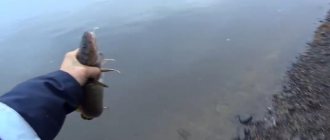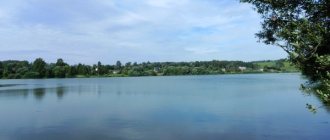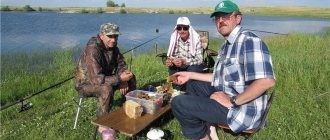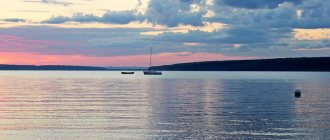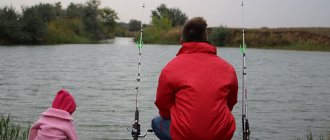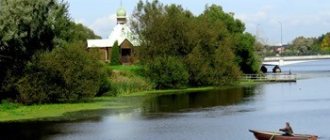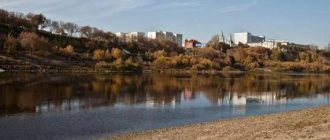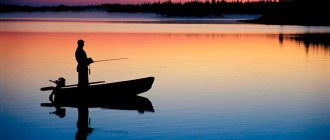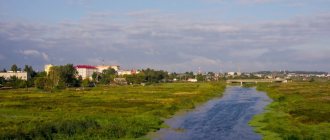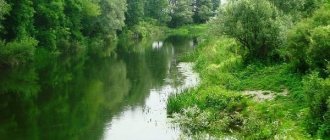Fishing in the Kaliningrad region - this is the Baltic Sea, two large bays, lakes and rivers.
- Where to fish
- Fishing reports
- Fishing ban
The main types of fish caught in the Baltic Sea are cod, flounder, herring and garfish. In the Kaliningrad and Curonian bays, fishermen hunt mainly for pike perch, bream, perch, and eel. The main fish species on lakes and rivers are pike, catfish, roach, chub, burbot, and crucian carp.
Kaliningrad region
There are also fish that are rare in other regions. This is a fisherman, which is caught mainly in the Sheshupa River, as well as Baltic whitefish and vendace, which live in Lake Vishtynets.
Where to fish
Sea and bays
Baltic Sea. Sea fishing is very popular in the Kaliningrad region. The most fishing places are located near Cape Taran and in the vicinity of Baltiysk.
Curonian Spit
Curonian Lagoon. The fish that live here are divided into anadromous and freshwater. The first include smelt, which is caught in the bay in early spring and winter. Also passing through the bay are small fish, whitefish, salmon, brown trout, and lamprey.
Permanent freshwater inhabitants of the bay: pike perch, bream, asp, silver bream, crucian carp, burbot, perch, etc. The favorite places of fishermen on the bay are the village of Rybachy and bays in the Polessk and Slavsky regions (Polessk, Zalivino, Kashirskoye, Matrosovka).
Kaliningrad Bay. The water in the Kaliningrad Bay has a low degree of salinity. This leaves an imprint on the fauna of the reservoir. In the bay near the coast of the Baltic Spit they catch eel and herring coming from the sea. However, the main catch here is freshwater fish: pike perch, bream, roach, perch, sabrefish.
Places for fishing are near the Blue Lakes on the outskirts of Kaliningrad, in the vicinity of the village of Ushakovo, where the Prokhladnaya River flows into the bay, the mouth of the small Nelma River, as well as the Balga Peninsula.
Lakes and rivers
Sheshupe River. One of the most beautiful rivers in the Kaliningrad region, flowing near the Lithuanian border. In the summer they go there mainly for chub, using fly fishing and spinning when fishing, and in the spring the fish are well caught.
Deima River. Not the largest river in the region (only 37 kilometers long), but it is popular among fishermen. They fish both from the shore and from boats.
Here you can find: pike perch, pike, asp, perch, chub, catfish, roach.
Vishtynets Lake
Vishtynetskoe lake. The lake is located in the southeast of the Kaliningrad region, next to Poland and Lithuania. The lake is the largest in the region.
The water here is very clean, the fish are also fine. There are bream, carp, pike, perch and other freshwater species. Interesting fish species include Baltic whitefish, vendace, and river eel.
Neman River. The border between the Kaliningrad region and Lithuania runs along the Neman. Fishing here is subject to border restrictions, but fishing is possible.
They prefer to fish with a spinning rod for predatory fish, for example, asp. They are mainly caught within the boundaries of Sovetsk and the town of Neman.
Fishing in other regions: Leningrad and Pskov regions.
Tackle for fishing cod at sea
Spinning rod for sea fishing with dough up to 1 kg
The first thing you need is, of course, a spinning rod. I have two posted here. One with rollers like this.
The second spinning rod has regular rings.
And the spinning class is inline, that is, where the cord passes through the rod itself. Such spinning rods are generally very expensive, and it’s definitely not worth buying them for the first time. Although, in principle, they are convenient. I caught them with these, I like them, but this thing is not cheap. Therefore, if you want to start, take the simplest thing - with rings like these.
And then, if you really enjoy this fishing and like it, move on to something more interesting. In my opinion, the same rollers are needed for ocean fishing. In our conditions he. Well I do not know. There are amateurs who catch fish with these, but I don’t see much point in them. Just this plan (with rings) is enough.
Recommended spinning test, I would recommend up to 1 kg. There is no need to make it smaller, there is no need for something so thin, here it is needed for large baits. For example, this bait weighs 900 grams, and it is perfect for those fishing conditions. This so-called punda.
Fishing Tips: Jig for sea fishing from shore - How to best use it
A jig is also used, from about 500 grams to kg, depending on the fishing conditions.
On average, they fish somewhere from 50 to 100 meters. Sometimes it’s smaller, sometimes it’s deeper, but on average these baits are very heavy. You can see for yourself that the fittings here are so powerful, the hooks are healthy, there’s no need to shred them. The fish will not appreciate this. Everything is big here.
Sea fishing reel with counter
A little about coils . These coils are equipped with counters. This was done for a reason, i.e. as you can see here is the counter.
This is necessary to understand at what depth your bait is located. You naturally navigate by echo sounder, i.e. you find a school of fish and try to fish over it. The fish is not always at the bottom, and you have to look for it in the water level, so the meter will help you here.
I wouldn’t advise you to take the cheapest reels, or at least before you buy, I recommend taking them apart and seeing what’s inside. If there are a lot of plastic parts inside, then it won’t work – it will fall apart instantly. You shouldn’t take too expensive ones either, especially if you are eating for the first time, at least to understand whether you like this fishing or not, but I repeat once again, you shouldn’t take the cheapest ones.
Naturally, the more metal parts in the reel, the more reliable it is, but also more expensive.
Cord 0.37-04 mm
For fishing cod in the Barents Sea, I usually take a line of 0.37-0.4 mm.
Here I have 0.4 mm, it holds 40 kg, this is quite enough. If you take thicker ones (0.5-0.6 cords are sold), of course the reliability increases, but the windage also increases , which is not always good, especially when fishing at great depths.
You yourself can imagine that with an increase in the thickness of the cord during the current, the bait will be released at such a serious angle that 100 meters can grow there to 150 meters, freely. Therefore, 40 kg breaking load, in my opinion, is more than sufficient .
Lures for sea cod fishing
And a little more about the baits themselves . Lures used range from 500 to 1000 grams . It happens a little more if the depths are very deep. But so 700-800 grams. This is not particularly important; it does not greatly affect the fish bite.
In my opinion, color also doesn’t have much of an impact. Here, for example, is a fluorescent one with a light accumulator.
I think the light accumulator plays a certain role, because it will be visible at depth. But I don’t know how visible it will be there at the same 100 meters, but they prefer to catch it with a light accumulator. Although the same punds, they are usually not painted - a purely metal rod, turned with a good hook - that's all.
Punda metal for cod
A fluorocarbon leash is placed between the pund and the cord . I used to knit on my own, i.e. I bought a thick line of 0.8 or 1 mm, even, and tied on these rigs, they are popularly called peppers. They come in different colors, but the one in the photo is red.
The rig is knitted - 3 meters long, or not three, but smaller - 2 meters. And a maximum of three pieces are tied, it’s not worth it anymore, because with a good bite, and there’s a good bite there very often, if you find yourself in good weather, you can hang on all the hooks at once on a cod, and the cod there can also be very decent. Therefore, no more than three.
I used to knit marine tackle myself, but now I’ve switched to store-bought ones. In general, everything there is done the same way as I would have connected it myself, only everything is already equipped and there is no need to mess around. Everything is the same – here it’s white and red.
In general, in fact, in terms of colors, the most common are white, red, yellow, and sometimes luminous. For example, here it is very luminous.
In my opinion, there is not much difference here, because it is dark, but the fish, in fact, at least distinguishes something, sometimes it bites better on some colors, sometimes on others - this is noticeable.
Tips for a fisherman: Everything for sea fishing in St. Petersburg - Tips for a beginner
Here, in brief, I told you everything that I would advise a beginner to catch cod in the Barents Sea. I hope you found my information useful.
Personally, I look forward to trips to the sea, and our team will definitely shoot a video from the fishing spot. I don’t know what will happen there, but we hope that we will get good weather and not only catch fish, but also shoot an interesting video.
You can bring an adequate amount of drinks and food on board. You can also steer in calm conditions on the water and take photos.
Ban on fishing in the Kaliningrad region
- In the 26th subregion of the Baltic Sea: throughout the year - Atlantic salmon (salmon) - in a water area with a belt width of 1 nautical mile from the mouths of rivers flowing into the Baltic Sea;
- In other water bodies of fishery importance in the Kaliningrad region (with the exception of fishing grounds provided for the organization of recreational and sport fishing):
- from April 20 to June 20 (two-month period for the protection of spring-spawning fish species): in the coastal zone of the Curonian Lagoon at a distance of 0.5 km from reed thickets, and in their absence - at the same distance from the coastline; in the coastal zone of the Kaliningrad Bay at a distance of 0.5 km from reed thickets, and in their absence - at a distance of 1 km from the coastline;
- in the Kaliningrad Bay - east of the line connecting Cape Tupoy (the village of Rybachy) with the village of Vzmorye;
- in the Kaliningrad Sea Canal - from bulk islands, from watercraft (from the city of Kaliningrad to the ship repair yard in the city of Svetly);
- in all rivers, canals of the Polesie and Slavsk regions, with the exception of the Deyma River and the Polesie Canal, where fishing from the shore is allowed;
- in all lakes of the Polesie and Slavsk regions that have a hydraulic connection with rivers, as well as canals and channels connecting lakes with rivers;
- in all floodplain lakes connected with the rivers Neman, Pregolya, Deyma and the Zelenograd Canal, as well as in canals and channels connecting these lakes with rivers;
- in the Nelma River - from the mouth to 9 km upstream;
- in the Prokhladnaya River with its tributaries and canals;
- in the Zelenograd Canal - to the left branch of the Zelenogradka River;
- in all other rivers and canals flowing into bays, at a distance of 2 km from the mouths upstream;
- in the Neman River, its tributaries and branches - with bottom fishing rods, extraction (catch) of aquatic biological resources from boats and other watercraft;
- throughout the year: in Tikhaya Bay (Lake Vishtynetskoye) along the outer boundaries of fishing squares N 51, 63
Fishing paradise
In Kaliningrad and the region there are about four thousand lakes with a total area of approximately 3,000 hectares. Most of them are small bodies of water, and only 38 lakes can be called large. The largest lake of glacial origin is Vishtynetskoye, which is also called “European Baikal”. The greatest depth of this pleasant “bonus” is 54 meters, and its area covers 18 square kilometers. The estimated age of Lake Vishtynets is 20 thousand years, which is 10 thousand older than the Baltic Sea itself. The lake is famous for its clear water, “cool” places and frequent trophy specimens.
